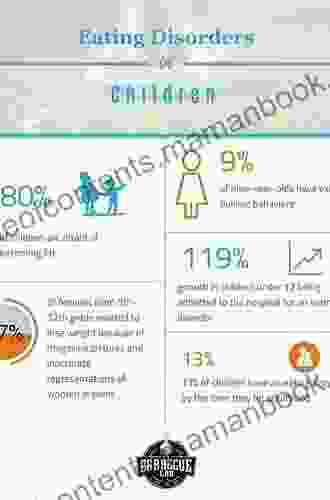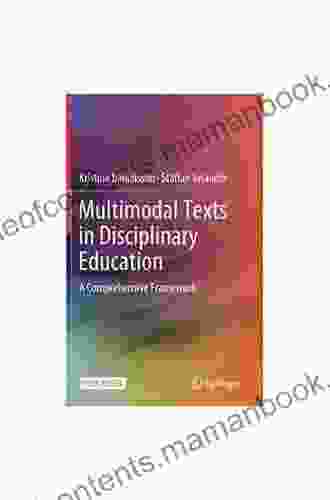Eating Disorders in Children and Adolescents: A Comprehensive Guide for Parents

Eating disorders are serious mental health conditions that are characterized by異常な食事習慣and an obsession with body weight and shape. Eating disorders can affect children and adolescents of all genders, but they are more common in girls.
There are several different types of eating disorders, including:
- Anorexia nervosa: People with anorexia nervosa restrict their food intake to the point of starvation. They may also engage in excessive exercise and have a distorted body image.
- Bulimia nervosa: People with bulimia nervosa binge eat and then purge the food they have eaten. They may also use laxatives or diuretics to try to lose weight.
- Binge eating disorder: People with binge eating disorder eat large amounts of food in a short period of time. They may feel out of control during their binges and may eat until they are uncomfortably full.
The symptoms of eating disorders can vary depending on the type of disorder. However, some common symptoms include:
4.7 out of 5
| Language | : | English |
| File size | : | 3700 KB |
| Text-to-Speech | : | Enabled |
| Screen Reader | : | Supported |
| Enhanced typesetting | : | Enabled |
| Word Wise | : | Enabled |
| Print length | : | 529 pages |
- Changes in eating habits: Eating less than usual, skipping meals, or binge eating
- Weight loss or gain: Significant weight loss or gain in a short period of time
- Preoccupation with body weight and shape: Constantly talking about weight or body size, or avoiding activities that involve food or eating
- Excessive exercise: Exercising excessively, even when injured or sick
- Use of laxatives or diuretics: Using laxatives or diuretics to try to lose weight
- Purging: Vomiting after eating, or using laxatives or diuretics to try to get rid of the food they have eaten
- Emotional problems: Depression, anxiety, or obsessive-compulsive disorder
The exact cause of eating disorders is unknown, but there are a number of factors that are thought to contribute to their development, including:
- Genetics: Eating disorders tend to run in families, suggesting that there may be a genetic component to their development.
- Psychological factors: People with eating disorders often have low self-esteem, a negative body image, and a need for control.
- Social factors: The media, peers, and family members can all contribute to the development of eating disorders by promoting unrealistic body ideals and emphasizing thinness.
The treatment of eating disorders typically involves a combination of psychotherapy, nutrition counseling, and medical care. Psychotherapy can help people with eating disorders to understand the underlying causes of their disorder and to develop healthier coping mechanisms. Nutrition counseling can help people with eating disorders to learn how to eat healthy and to maintain a healthy weight. Medical care may be necessary to treat any medical complications that have resulted from the eating disorder.
There is no surefire way to prevent eating disorders, but there are a number of things that parents can do to help reduce their child's risk of developing an eating disorder, including:
- Promote a healthy body image: Help your child to develop a positive body image by talking about the importance of health and fitness, and by avoiding dieting and weight-loss talk.
- Encourage healthy eating habits: Make sure your child eats regular meals and snacks, and that they have access to a variety of healthy foods.
- Limit exposure to media that promotes unrealistic body ideals: Talk to your child about the unrealistic body ideals that are often portrayed in the media, and help them to develop critical thinking skills so that they can resist these images.
- Be supportive and understanding: If you think your child may have an eating disorder, be supportive and understanding. Offer them help and encouragement, and avoid being judgmental or critical.
Eating disorders are serious mental health conditions that can have a devastating impact on the lives of children and adolescents. However, with early diagnosis and treatment, most people with eating disorders can recover and live healthy, fulfilling lives. If you think your child may have an eating disorder, seek professional help immediately.
4.7 out of 5
| Language | : | English |
| File size | : | 3700 KB |
| Text-to-Speech | : | Enabled |
| Screen Reader | : | Supported |
| Enhanced typesetting | : | Enabled |
| Word Wise | : | Enabled |
| Print length | : | 529 pages |
Do you want to contribute by writing guest posts on this blog?
Please contact us and send us a resume of previous articles that you have written.
 Top Book
Top Book Novel
Novel Fiction
Fiction Nonfiction
Nonfiction Literature
Literature Paperback
Paperback Hardcover
Hardcover E-book
E-book Audiobook
Audiobook Bestseller
Bestseller Classic
Classic Mystery
Mystery Thriller
Thriller Romance
Romance Fantasy
Fantasy Science Fiction
Science Fiction Biography
Biography Memoir
Memoir Autobiography
Autobiography Poetry
Poetry Drama
Drama Historical Fiction
Historical Fiction Self-help
Self-help Young Adult
Young Adult Childrens Books
Childrens Books Graphic Novel
Graphic Novel Anthology
Anthology Series
Series Encyclopedia
Encyclopedia Reference
Reference Guidebook
Guidebook Textbook
Textbook Workbook
Workbook Journal
Journal Diary
Diary Manuscript
Manuscript Folio
Folio Pulp Fiction
Pulp Fiction Short Stories
Short Stories Fairy Tales
Fairy Tales Fables
Fables Mythology
Mythology Philosophy
Philosophy Religion
Religion Spirituality
Spirituality Essays
Essays Critique
Critique Commentary
Commentary Glossary
Glossary Bibliography
Bibliography Index
Index Table of Contents
Table of Contents Preface
Preface Introduction
Introduction Foreword
Foreword Afterword
Afterword Appendices
Appendices Annotations
Annotations Footnotes
Footnotes Epilogue
Epilogue Prologue
Prologue Susan Wood
Susan Wood Martin Luther King Jr
Martin Luther King Jr Klancy Miller
Klancy Miller Lily Dunn
Lily Dunn A S Kline
A S Kline Alex Richardson
Alex Richardson Joyce Reid
Joyce Reid Grisha Stewart
Grisha Stewart Jeremy Flagg
Jeremy Flagg Birithivy Yogaratnam
Birithivy Yogaratnam Edward Kamens
Edward Kamens Clara Dupont Monod
Clara Dupont Monod Motomu Takayama
Motomu Takayama Brandon Ellis
Brandon Ellis Allen Eskens
Allen Eskens Tawna Fenske
Tawna Fenske Naguib Mahfouz
Naguib Mahfouz S M Boyce
S M Boyce Cade Wood
Cade Wood Derrick Anderson
Derrick Anderson
Light bulbAdvertise smarter! Our strategic ad space ensures maximum exposure. Reserve your spot today!

 Blake KennedyThe Measure of Man: Exploring the Ethical and Philosophical Implications of...
Blake KennedyThe Measure of Man: Exploring the Ethical and Philosophical Implications of...
 Edison MitchellBrink Of War: A Prosecution Force Thriller (The Prosecution Force Thrillers...
Edison MitchellBrink Of War: A Prosecution Force Thriller (The Prosecution Force Thrillers... Ivan TurgenevFollow ·18.7k
Ivan TurgenevFollow ·18.7k Brady MitchellFollow ·12.8k
Brady MitchellFollow ·12.8k Roger TurnerFollow ·14.6k
Roger TurnerFollow ·14.6k Greg FosterFollow ·8.8k
Greg FosterFollow ·8.8k Edison MitchellFollow ·10.9k
Edison MitchellFollow ·10.9k Jared PowellFollow ·14.2k
Jared PowellFollow ·14.2k Devin CoxFollow ·13.3k
Devin CoxFollow ·13.3k Gage HayesFollow ·12.6k
Gage HayesFollow ·12.6k

 Derek Bell
Derek BellLike An Eagle Alta Mabin: A Literary Journey Through the...
Like An Eagle Alta Mabin is a powerful...

 Garrett Powell
Garrett PowellOne in the Way of Dan: A Complex and Nuanced Novel
Dan is a successful...

 Foster Hayes
Foster HayesThe Ultimate Air Fryer Cookbook for Beginners: A...
Welcome to...

 Paulo Coelho
Paulo CoelhoFun Guessing Game From Cute Pictures: The Best Gift for...
Looking for a fun...

 Dan Henderson
Dan HendersonEnglish Poetry About Modern Day Japan: A Journey Through...
Step into the realm where...

 Jamie Blair
Jamie BlairThe Enigma of Patricide Dave Harris: A Journey into the...
The annals of true crime are replete with...
4.7 out of 5
| Language | : | English |
| File size | : | 3700 KB |
| Text-to-Speech | : | Enabled |
| Screen Reader | : | Supported |
| Enhanced typesetting | : | Enabled |
| Word Wise | : | Enabled |
| Print length | : | 529 pages |








